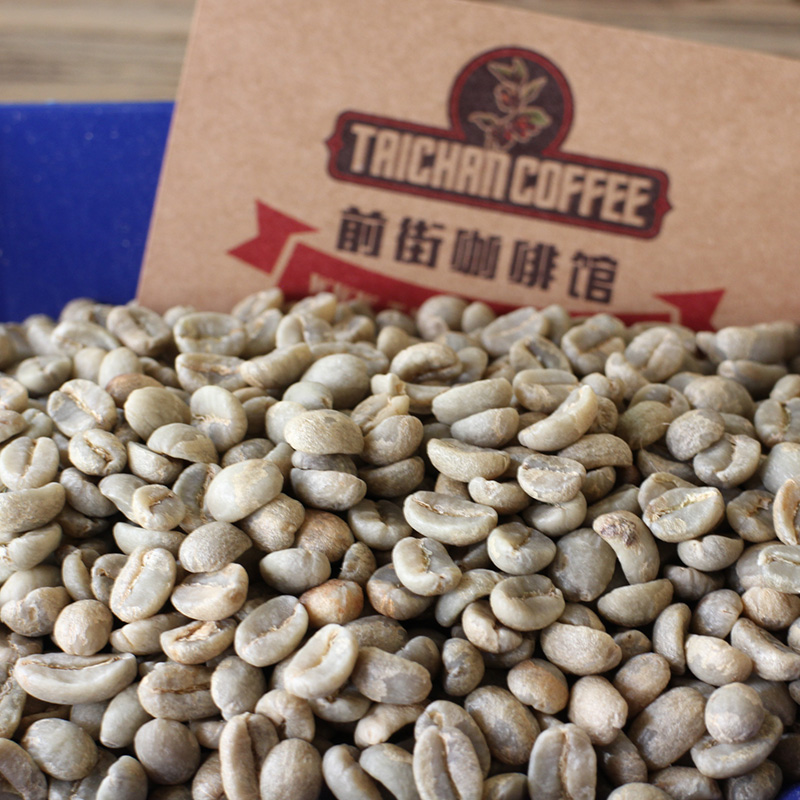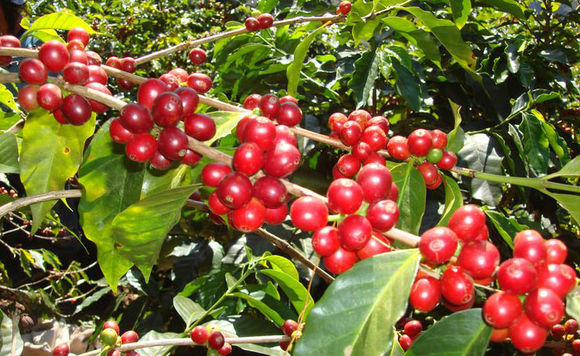Kenya Coffee Raw Bean Kenya AA Manor Import Raw Coffee Bean Water washing Kenyan Coffee processor
Kenya coffee has a large following in the boutique coffee world, and Kenya AA has extraordinary popularity.
Known as the Connoisseurs Cup, Kenyan coffee is renowned in the coffee world for its rich aroma, bright and vibrant acidity, full and elegant alcohol and red wine flavor. Caffeine in different producing areas has its own subtle flavor due to the difference of microclimate.
Kenya coffee varieties
Bourbon Bourbon was first brought to Kenya for cultivation. In the 1950s, Scott Laboratory, an agricultural research institution at that time, made unremitting efforts to select two excellent hybrids SL-28 and SL-34, overturning the long-standing bias that artificial breeding varieties were not superior to natural varieties. SL-28 and SL-34 help Kenya coffee to form its own unique flavor characteristics and establish a perfect reputation in the coffee industry.
According to SL Laboratory botanists, SL28 and SL34 are genetic variants. Among them, SL28 has a mixed lineage of French missionaries, mocha and Yemeni tibica. SL28 was bred to produce high quality, pest resistant coffee beans in large quantities.
Although SL28 did not yield as much as expected, the copper-leaf color and bean-like beans had great sweetness, balance and complexity, with notable citrus and dark plum characters. SL34 and SL28 taste similar, except for complex acid, and a good sweet finish, the taste is heavier, richer and cleaner than SL28. SL34 has French missionary, bourbon, and more Tibica pedigree. The beans are similar in appearance to SL28, but are better able to adapt to sudden heavy rain. It is these two important varieties that lead us to recognize the unique Kenyan style: intense and rich fruit acids, rich taste and beautiful balance.
Coffee growing areas of Kenya
Kenya's coffee-producing areas are mainly concentrated in the plateau areas represented by Mount Kenya. Tropical climate, acidic red volcanic soil for coffee provides a natural suitable growth environment. It is best known for its seven major producing areas, including Nyeri, Sika, Chiambu, Gilinya, Ruiru, Muranga and the west side of Mount Kenya. The main producing areas are Nyeri and Ruiru in the middle.
Kenya Coffee Processing
Large farms usually have separate treatment facilities. A large number of small farmers usually pick ripe coffee berries by hand. Coffee picking is labour-intensive, requiring the whole family to work and even workers to be hired during harvest season. Fresh coffee needs to be transported in time to a cooperative-owned coffee processing plant for pulping, which may be carried by ox cart, pickup truck or truck. After dehulling, Parchment coffee is stored briefly at the cooperative's processing plant and sent to privately owned plants for dehulling.
Kenya Coffee Grade
Kenya is known for grading coffee beans by particle size. Usually divided into nine grades, according to the bean type, there are PB (ie round beans, accounting for about 10% of the total yield), in addition to E (elephant beans), AA, AB, C, T, TT, MH, ML according to the size. The best coffee grade is bean berry PB, followed by AA++, AA+, AA, AB, etc., in that order.
Kenyan coffee is usually classified as follows:
1) Common categories:
Hand-picked coffee fruit, after manual selection, pick out immature fruit (unripe), overripe fruit (overripe) and other defects, peeling, after about 36 hours of fermentation, placed on the metal rack after drying in the sun, in the processing plant to remove the shell (parchment), become a charm with blue-green appearance Kenya raw beans.
These beautiful raw beans are graded according to particle size, shape, and weight:
E: kenyaE, elephant bean, elephantbean, 18 mesh or more (including round beans)
AA: Kenya AA, 17-18 mesh,
AB: KenyaAB, 15-16 mesh, is a mixture of Class A and Class B
TT: AA, AB light beans screened by air flow sorting machine
PB: KenyaPB, 15 mesh and above, round beans
C: 12-14 mesh, and PB light beans screened by an air separator
T: Below 12 mesh, there are many defective beans, broken beans and light beans
HE (Hulled Ears)
2) Raw beans that have not been graded by official standards are UG (ungrade)
E,AA,AB,PB→UG1
C,TT,T,HE→UG2
(Note: Class A above 17 mesh (6.8mm), Class B above 16 mesh (6.3mm), 18 mesh =18/64 inches, 1 inch = 25.4mm)
Classification diagram
taste
Kenyan coffee has an irresistible aroma, and the best Kenyan coffees have a strong acidity reminiscent of ripe blackcurrants, citrus or cherries. Kenyan coffee also has strong berry aromas, such as blueberry, often rose hip, passion fruit and floral aromas, with a blackberry and grapefruit flavor, is a favorite of many coffee lovers.
This coffee has an excellent medium purity, crisp and refreshing taste. Fresh flavor and best for iced coffee in summer. When tasting this coffee, it will definitely give you the best coffee experience if it is accompanied by fruits with acidity such as grapefruit.
Recommended Items [KenyaNyeri GatugiAA]
Country: Kenya
Grade: AA
Region: Nyeri Central Mountain Region
Altitude: 1600-2300 m
Soil quality: volcanic clay
Treatment method: washing
Bake: Medium Light
Varieties: SL28, SL34
Treatment Plant: Gatugi Treatment Plant
Producer: Small coffee farmers
Flavor: Floral, blackcurrant, cranberry

Important Notice :
前街咖啡 FrontStreet Coffee has moved to new addredd:
FrontStreet Coffee Address: 315,Donghua East Road,GuangZhou
Tel:020 38364473
- Prev

The most famous coffee producers in Asia are Sumatra, Java and Kaliman, India.
The most famous coffee producers in Asia are the islands of Malaysia: Sumatra, Java and Kaliman. Sumatra Manning coffee from the Indonesian island of Sumatra is the most famous. Mantenin coffee is produced in Lake dopa in Sumatra Province and Lake Tawa in Aceh. This is the famous Shuangman of the two lakes. What Shuangman of the two lakes have in common is that they are both very thick.
- Next

American Fine Coffee beans Colombian Coffee Huilan Plateau Diamond Manor Special treatment Yellow bourbon species
Colombian coffee has the characteristics of sweet in acid and flat in bitterness. because of its suitable concentration, Colombian coffee is often used in high-grade mixed coffee. Have a kind of bitter experience, clear and astringent as life, and bitterness is necessary in life, stop at the end of the tongue is a thorough recollection of the past. Suffering is pain, clear and quiet, the last fragrance has become a kind of spiritual
Related
- Detailed explanation of Jadeite planting Land in Panamanian Jadeite Manor introduction to the grading system of Jadeite competitive bidding, Red bid, Green bid and Rose Summer
- Story of Coffee planting in Brenka region of Costa Rica Stonehenge Manor anaerobic heavy honey treatment of flavor mouth
- What's on the barrel of Blue Mountain Coffee beans?
- Can American coffee also pull flowers? How to use hot American style to pull out a good-looking pattern?
- Can you make a cold extract with coffee beans? What is the right proportion for cold-extracted coffee formula?
- Indonesian PWN Gold Mandrine Coffee Origin Features Flavor How to Chong? Mandolin coffee is American.
- A brief introduction to the flavor characteristics of Brazilian yellow bourbon coffee beans
- What is the effect of different water quality on the flavor of cold-extracted coffee? What kind of water is best for brewing coffee?
- Why do you think of Rose Summer whenever you mention Panamanian coffee?
- Introduction to the characteristics of authentic blue mountain coffee bean producing areas? What is the CIB Coffee Authority in Jamaica?

